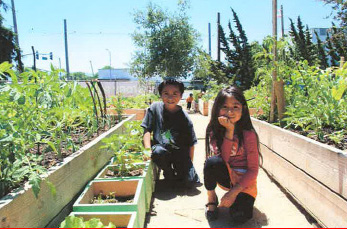4-H Delivers
Square Food Gardens

The Rock Springs community in San Jose is considered a grocery desert and has no major supermarkets within a mile radius from the center of town. The median household income is below the national average at $41,000, and over 70% of children in the local schools participate in the federal free lunch program. Without access to healthy options such as fresh fruit and vegetables, nutrition is compromised and enough food is often a concern for residents.
What has 4-H Done?:
In an effort to encourage healthy lifestyles and help alleviate poverty in the community, the Santa Clara County 4-H Garden Service Project set out to create and distribute square foot garden boxes to the families of Rock Springs. The 4-H youth participated, side-by-side, with the children of Rock Springs in project meetings and Master Gardener classes. In these meetings, topics such as soil preparation, composting, and correct planting techniques were covered. By also collaborating with Schmahl Science Workshops and an ongoing Victory Garden project in the community, the group worked with children to plant and harvest crops in their square foot gardens.
The Payoff:
After just two months, the Santa Clara Garden Service Project was able to reach out to the Rock Springs community and develop a relationship with the families and youth. Through two Schmahl Science workshops, distribution of the boxes to local school programs, collaboration with the community Victory Garden, and three Rock Springs Garden work days, the project laid the groundwork for continued education and outreach. The 4-H youth and the members of the Rock Springs community planted crops such as carrots, radishes, lettuce, peppers, and tomatoes. They took responsibility for building and maintaining a compost heap, weeding the square foot gardens, and harvesting the first round of crops in June. Overall, the project encouraged the participation of both parents and children and allowed the 4-H youth to educate the community about self-sufficiency and nutrition. To continue the project, the square foot gardens have been replanted, and the group has plans to continue developing and improving the project for the future.



